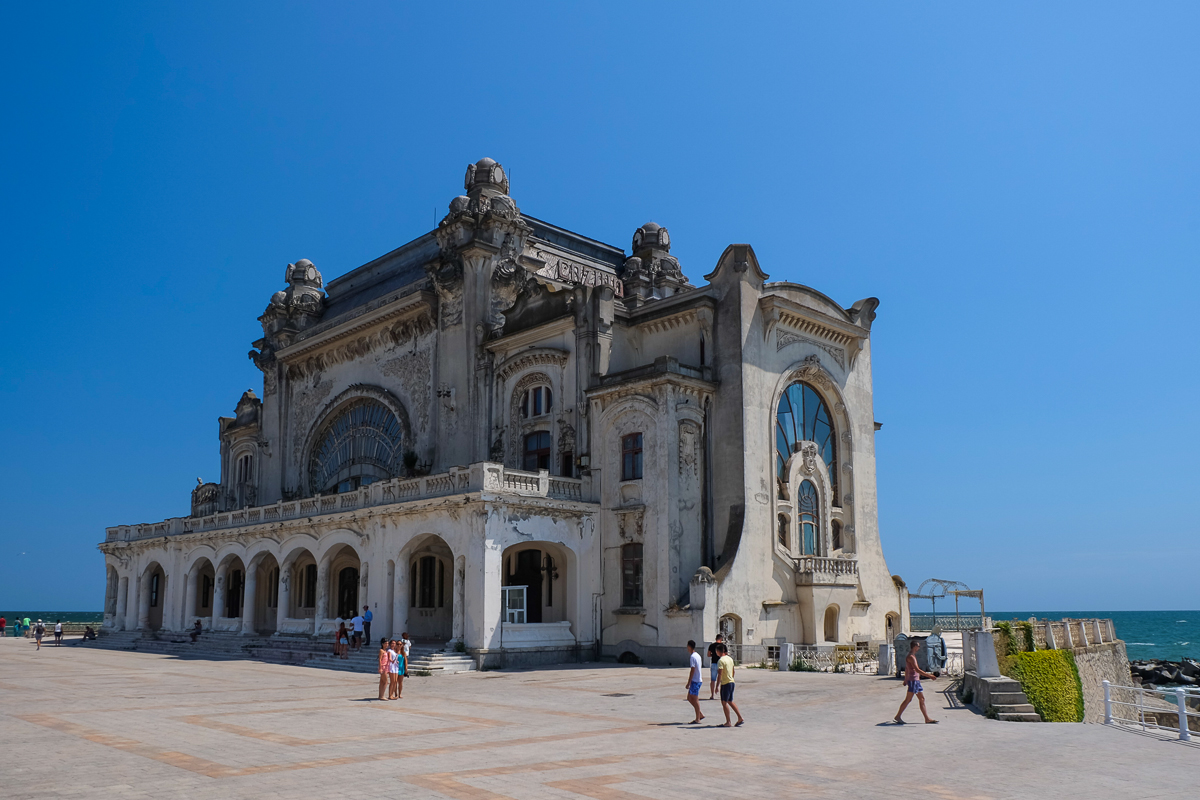
There are certain places that when you see them, you instinctively know they have a story behind them, that if the walls could talk, they would tell you about the people who were once part of the atmosphere, about the stories that took place there. That’s how it happens when you see the Constanta’s forgotten casino. Though only ruins remain, they are what we could call “beautiful ruins”, that is, they continue to fascinate and to tell their story further among the remains of long past days.
In the interwar period, stories of love were born on the streets of Constanta, and tragedies took place in the sunny city. Here was the place where huge sums of money were gambled, fortunes were gained and lost and some unlucky gamblers ended up throwing themselves in the Black Sea. Latest fashion garments were worn in the luxurious ballroom, restaurant, or casino. It was a seductive atmosphere of “la belle epoque”, in the city of Constanta.
The first ever casino from Constanta – Constanta’s forgotten casino
The first casino was built in 1880 in Constanta, in the same area of the peninsula, just next to the Genoese Lighthouse and to a charming kiosk. It was called the Kursaal (a word that could be approximately translated to relaxation room from German) and it was built of wood and parchment. Everyone who was anyone in the city was there each night.
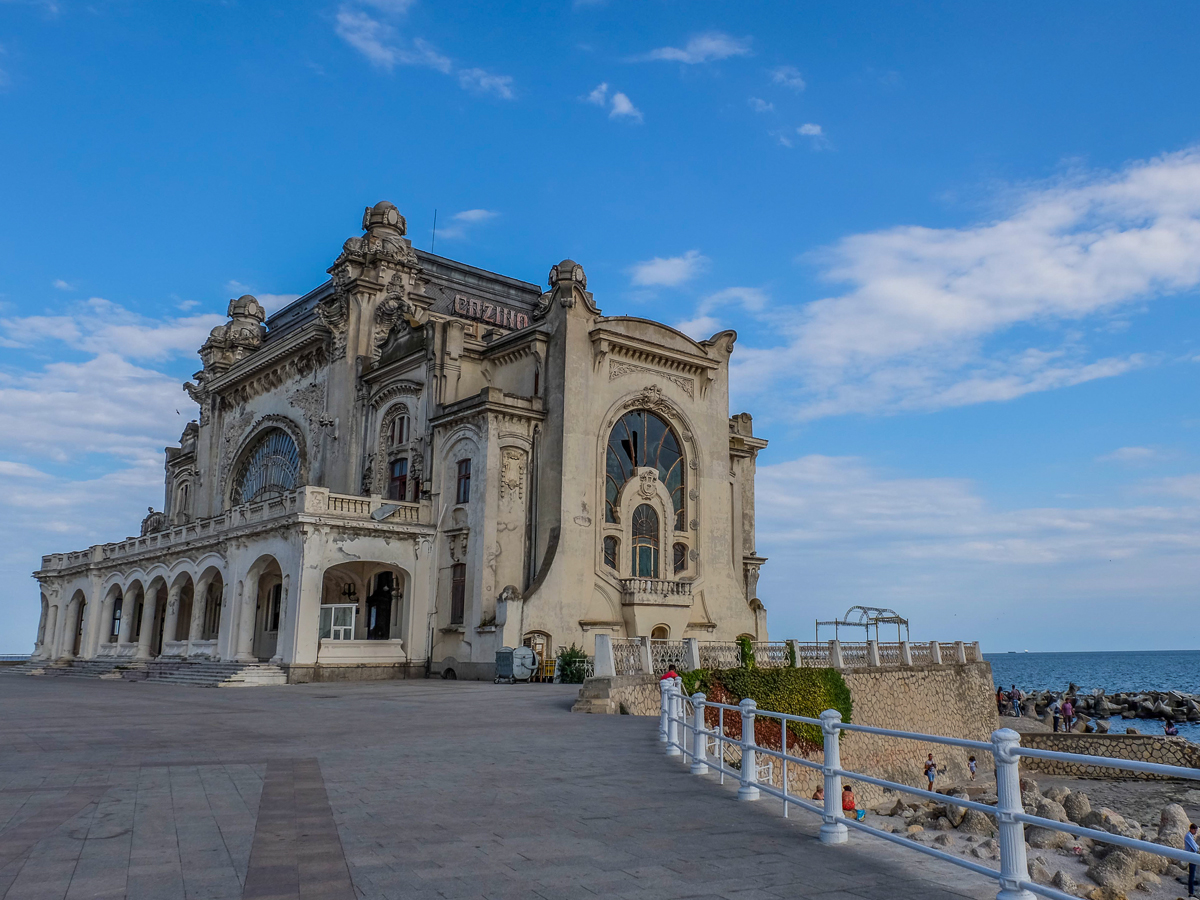
The Kursaal appeared at a time when the most beautiful houses in the city were built in the area: the Pariano House (now the Ion Jalea Museum), the Manissalian House (unfortunately bombarded in 1941), the Pasla House, the Barzanescu House, the Cananau House (where the Consulate of China was once located), the Zottu House, the Cuculis House, the Somanescu House or the Pilescu House, all belonging to families that were part of the local elite.
From Kursaal people could descend on a wooden ladder on the seaside rocks where the frequent visitors used to spend hours fishing. A stronger storm destroyed the roof of the Kursaal in 1891, and a year later it was completely demolished following a decision by the local authorities.
The “it” place before the modern Constanta Casino
The place of Kursaal was taken by Casin, also located on the Queen Elisabeth Boulevard, on the current site of the Aquarium. The casino had two overlapping terraces, both of which had a full view of the sea and harbor.
One of the owners of the casino was Captain Constantin Creanga, the son of the emblematic Romanian writer Ion Creanga and father of Horia Creanga, one of the greatest Romanian architects of the interwar period. The casino, which was also a temporary wooden building on a stone ground floor, had a short life and was dismembered in 1910 to make room for the impressive edifice to become the symbol of the seaside city.
The biggest Romanian casino
The third and modern Casino of Constanta was designed by architect Daniel Renard in Art Nouveau style. Renard was also the one who designed various important buildings in the city, such as the Aquarium or the Courthouse. The superb building was inaugurated on August 15, 1910, in the presence of King Ferdinand. It was the largest edifice of its kind in Romania. In 1912, Baron Edgar de Marcay, the casino’s owner, asked the City Hall to build a pavilion-restaurant in front of it. This is how the edifice that hosts the Aquarium today was built.
On August 20, 1916, when the bombings on Constanta began, the Casino was used by the Red Cross as a hospital, but the building was hit and 10 people died here. On November 19, 1917, the Casino became operational again. Since 1941, the Casino has become host to German troops who have been staying in the beautiful seafront edifice. Again, the casino suffered from the bombing, but it was renovated in 1951 with the aid of political prisoners. Since 1948, the Casino housed the House of Culture of the Trade Unions. The last major repair of the Casino was made between 1986 and 1988, but sadly it was neglected since then, after the fall of communism in Romania.
The legends of the Constanta Casino
Besides the official history of the Casino, there is also a legend that few people know of. It is said that the casino was built by a sailor who had a girl. The young woman died at a very young age when she was only 17 years old. Deeply hurt, her father built the Casino, so that young people in the city would have a place to go and have fun, just like his daughter would have.
It is also said that if you look at Casino from above, it has the shape of a hearse, and the windows would suggest the image of some graves. Moreover, if you look closely at the entrance door, you will see two ram heads, an ornament that could be found on old hearses.
The legend also says that during the summer, those who would lose at the gambling tables in casino would throw themselves into the waves of the Black Sea, which is the explanation for the storms that occur during autumn and winter in the cliff area. Their restless souls are still agitated by the sea, foamy and salty, washing the walls of the casino, once a proud symbol, today, Constanta’s most famous ruin.
Other legends say that if you listen closely at night, you can still hear the voices of those who lost their lives during the bombarding of the Casino when it was used as a hospital by the Red Cross. Whichever may be the truth, the Casino from Constanta is without a doubt a symbol of the glorious and prosperous interwar era and its ruins are still a testimony of the past century.
If you plan on visiting Romania, take a one day trip to the Black Sea and see the beautiful ruins of the Constanta Casino, as well as other interesting landmarks in this area, such as the Genoese lighthouse, Ovidiu’s Square or Trajan’s monument. Or you want to spend a couple of days here; you can take a trip to the Danube Delta and the Black Sea in just 2 days.


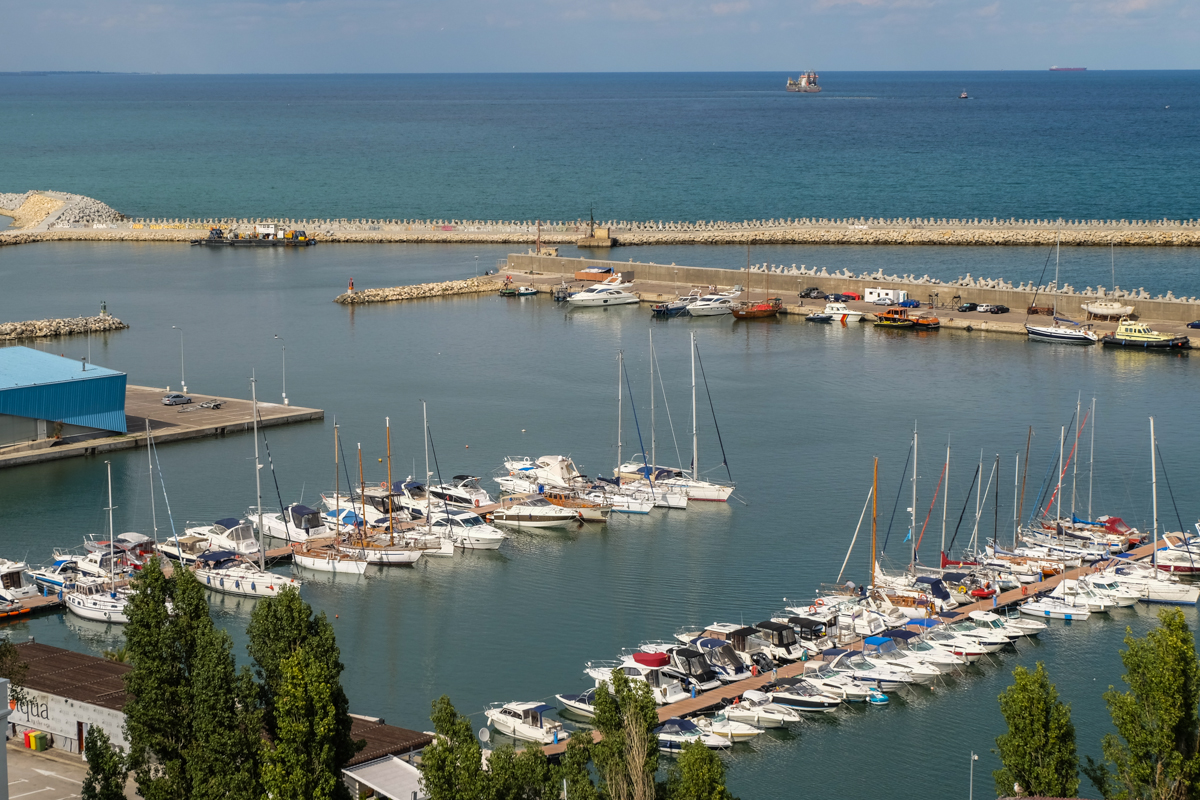
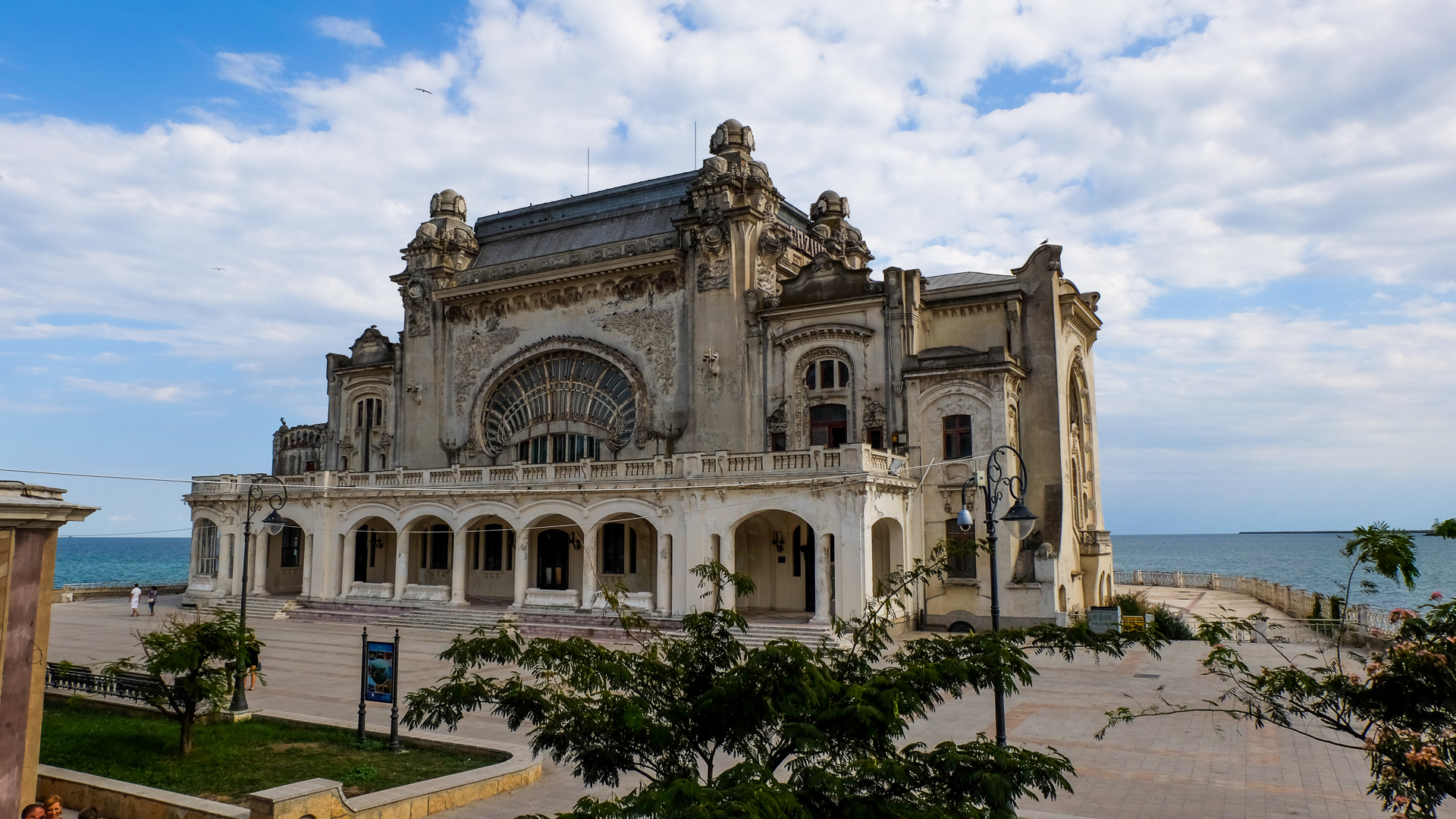

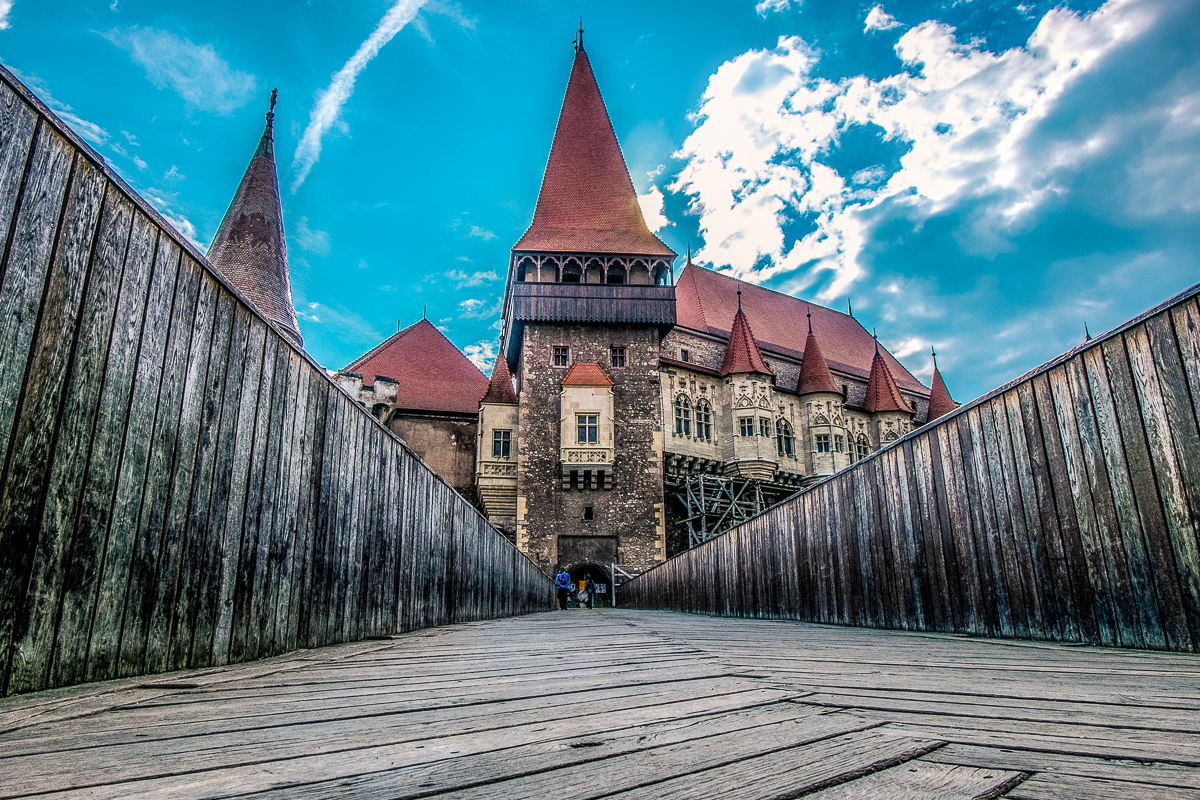

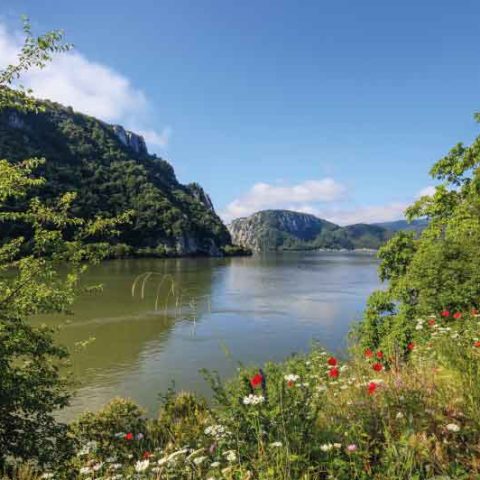
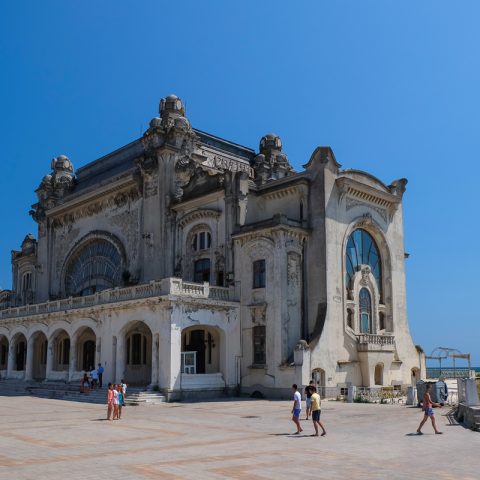
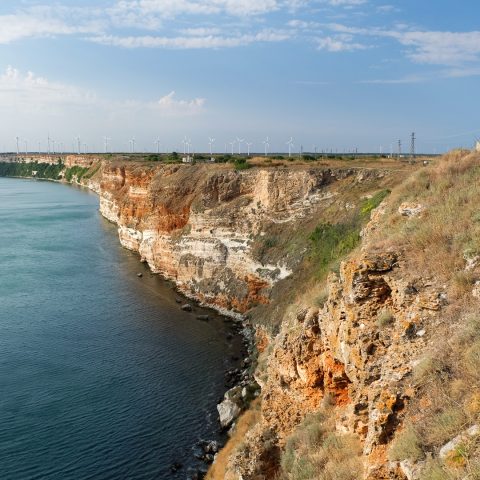











Leave a Reply